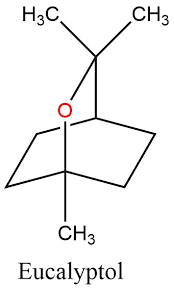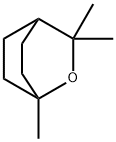Application and Toxicity of Cineole
Cineole is a natural organic compound that is a colorless liquid. It is a cyclic ether and a monoterpenoid.Eucalyptol is also known by a variety of synonyms: 1,8-cineol, 1,8-cineole, cajeputol, 1,8-epoxy-p-menthane.

Application
Cineole is an essential oil that is used as a fragrance or flavoring agent in: foods, candies, pharmaceutical aid (flavor), cough drops, and personal care products. It has a history of being used as an expectorant and an antiseptic. HUMAN EXPOSURE AND TOXICITY: Cineole is the main constituent of eucalyptus oil, and it is mainly used as a mucolytic agent in inflammatory airway diseases.
Animal Studies
A study was performed to assess the ocular irritancy potential of eucalyptol to the isolated bovine cornea. The corneas treated with eucalyptol were clear post treatment and had cloudy areas post incubation. Eucalyptol was considered not to be an ocular corrosive or severe irritant. Cineole was administered by gavage to three groups, each of five male and five female rats, for twenty-eight consecutive days, at dose levels of 30, 300 and 600 mg/kg bw/day. For both sexes at 300 and 600 mg/kg bw/day, examination of the liver revealed a dosage dependent incidence of centrilobular hypertrophy of the hepatocytes; no other indicators of liver damage were apparent. Following the two week recovery period, hypertrophy of hepatocytes was no longer present at 600 mg/kg bw/day for either sex.
Toxicity
There are no published data on whole essential oil oral intake. However, the high content of 1,8-cineole calls for cautious o.a. Lethality is not an issue (LD50 = 2.48 g/kg bw, rat), but sublethal doses administered over long periods of time may be a cause of concern. For example, venous congestion of liver lobule, granular degeneration of hepatocytes, and liver cell necrosis have been recorded in mice exposed for 20 days to 192.5 mg/kg oral dose of pure 1,8-cineole.
Although the lethal dose of camphor is high (5 g/kg bw, mice), signs of camphor intoxication in people in sublethal doses become clinically observable as oral and gastric irritation. Ingestion of many terpenoids elicit the same reaction, and then nausea and vomiting in extreme cases, muscular excitability, tremors, convulsions, confusion, irritability, hallucinations, and urine retention. Apnea, coma, and death may follow.
You may like
See also
Lastest Price from 1,8-Cineole manufacturers

US $10.00/KG2025-04-21
- CAS:
- 470-82-6
- Min. Order:
- 1KG
- Purity:
- 99%
- Supply Ability:
- 5tons

US $100.00/drum2023-09-13
- CAS:
- 470-82-6
- Min. Order:
- 1drum
- Purity:
- 99
- Supply Ability:
- 5000


